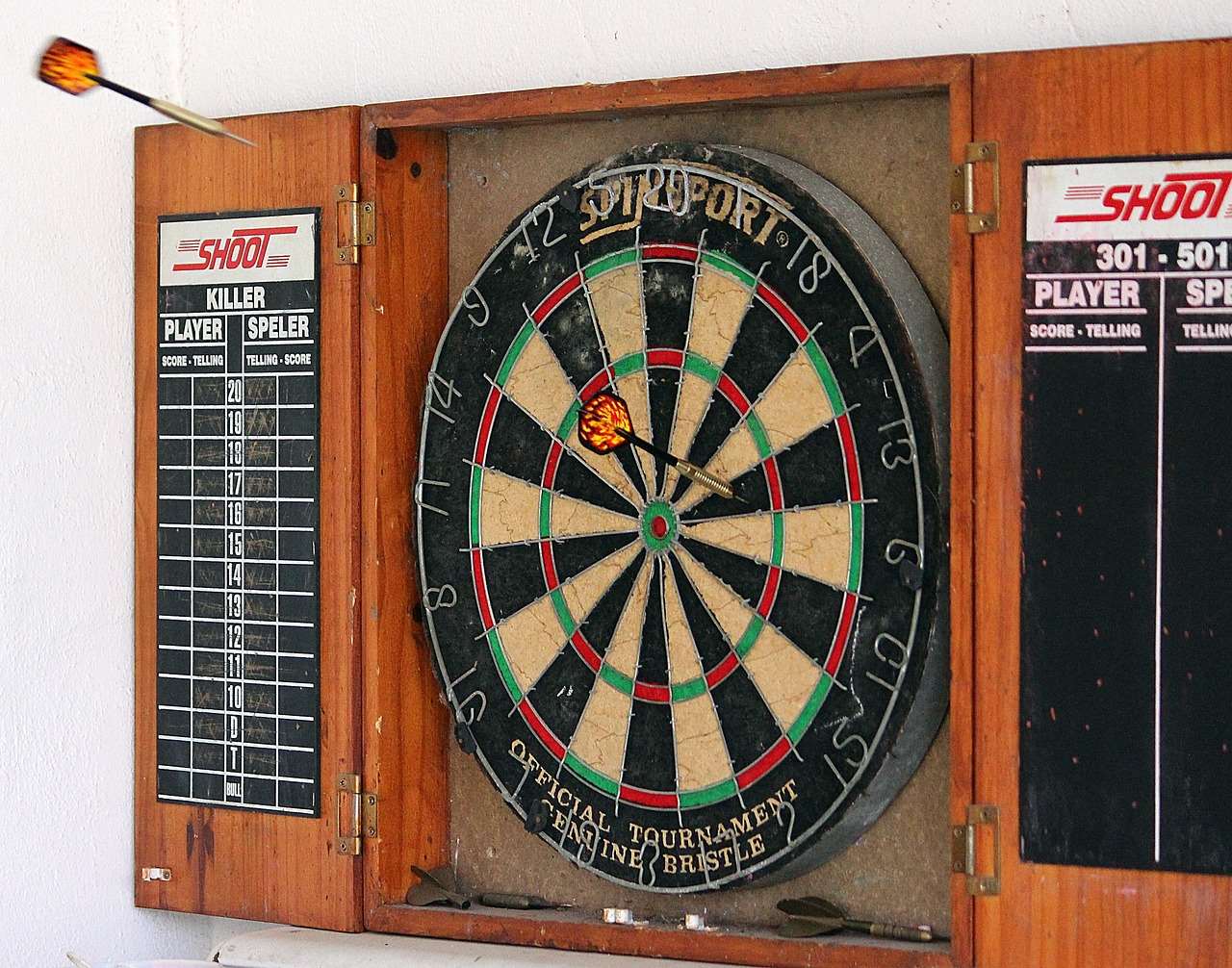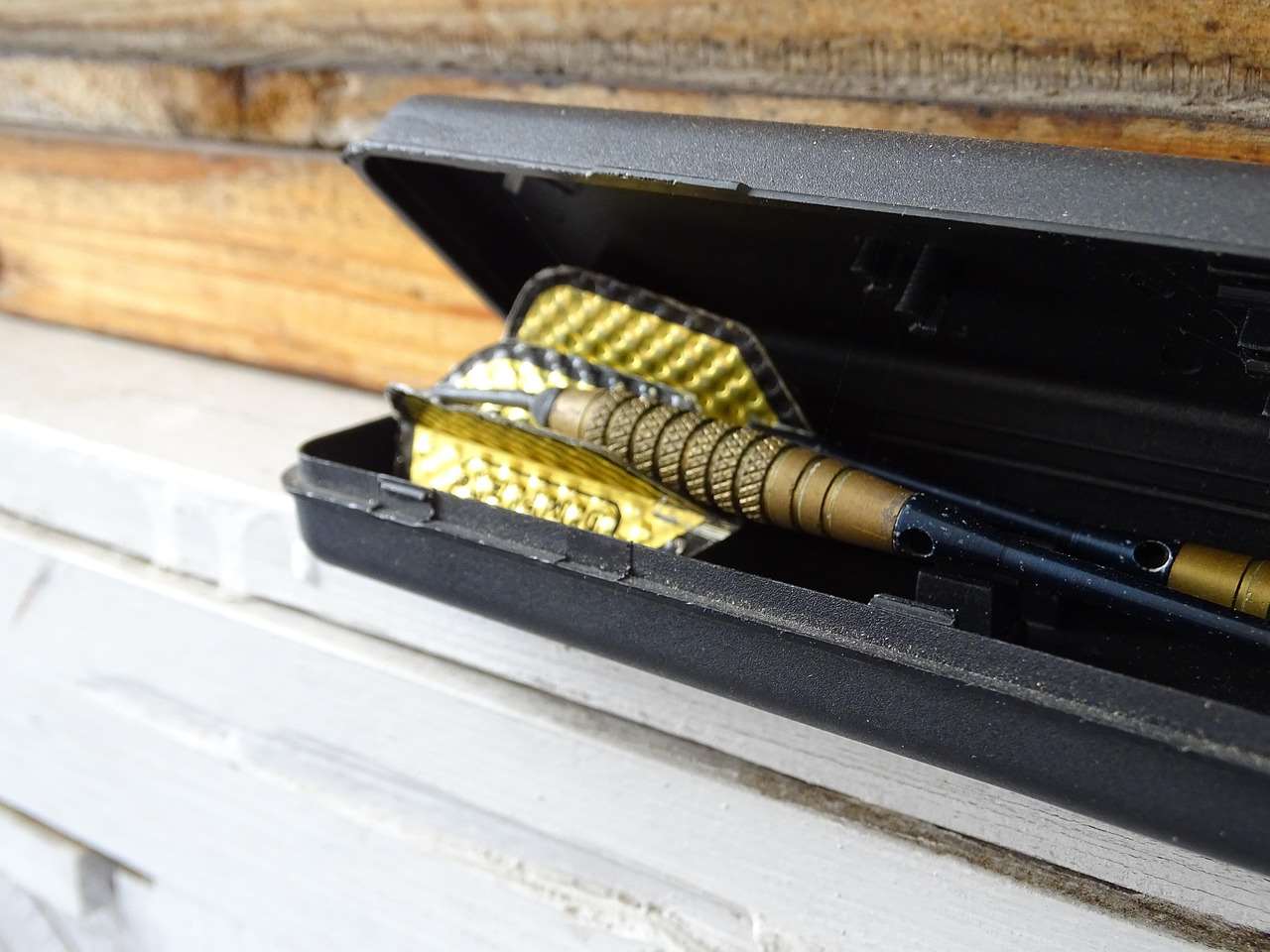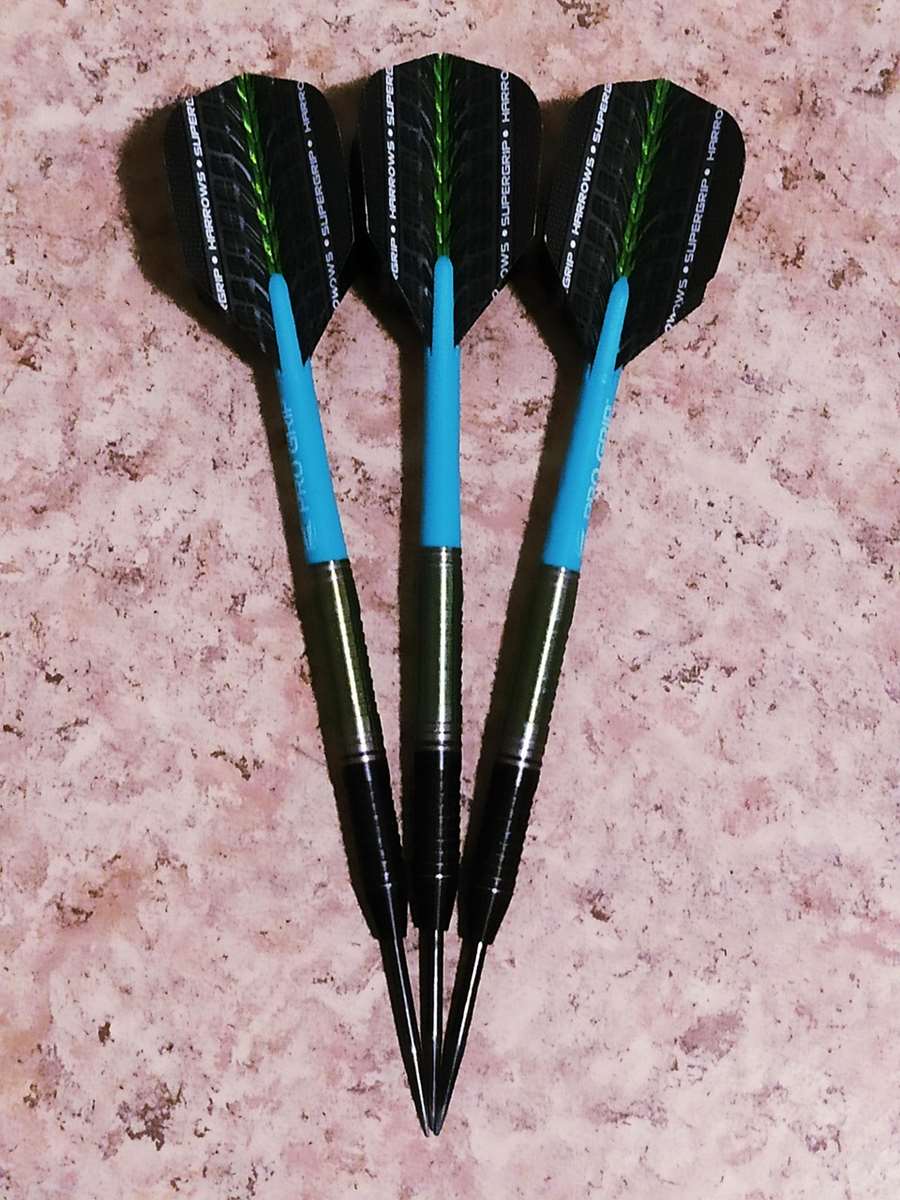Understanding darts scoring for beginners can seem daunting at first, but it boils down to aiming for specific sections and calculating the points you accumulate. This article will break down the basics of darts scoring, teach you how to start a game, track your score, and even offer tips to improve your accuracy.
⚠️ Still Using Pen & Paper (or a Chalkboard)?! ⚠️
Step into the future! The Dart Counter App handles all the scoring, suggests checkouts, and tracks your stats automatically. It's easier than you think!
Try the Smart Dart Counter App FREE!Ready for an upgrade? Click above!
Understanding the Dartboard Layout for Darts Scoring
The first step in mastering darts scoring for beginners is understanding the layout of a standard dartboard. The dartboard is divided into 20 numbered sections, a double ring, a treble ring, and a bullseye.
- Numbered Sections: Each section represents a number from 1 to 20.
- Double Ring (Outer Ring): Landing a dart in this ring doubles the score of the corresponding section. For example, landing in the double 20 scores 40 points.
- Treble Ring (Inner Ring): Landing a dart in this ring triples the score of the corresponding section. Landing in the treble 20 scores 60 points.
- Bullseye: The center of the board has two parts:
- Outer Bull (Single Bull): Worth 25 points.
- Inner Bull (Double Bull or Bullseye): Worth 50 points.
Familiarizing yourself with this layout is crucial for accurate score tracking and strategic aiming. Knowing where the high-scoring sections (like the 20 and 19) and the doubles are located will significantly impact your game.

Starting a Game and Darts Scoring Basics
The most common darts game is 501. Here’s how to start and keep darts scoring in this format:
- The Objective: The goal is to be the first player to reduce your score from 501 to exactly zero.
- Starting Score: Both players start with a score of 501.
- Taking Turns: Players take turns throwing three darts at the board.
- Scoring Each Round: After each round, the player adds up the score of their three darts and subtracts it from their remaining score.
- Busting: If a player scores more points than needed to reach zero, resulting in a negative score, this is called a “bust.” The player’s score reverts to what it was at the start of that round, and their turn ends.
- Doubling Out: To win, a player must reach zero by landing a dart in the double ring or the bullseye. This is known as “doubling out.”
Keep a running total for each player. A darts scorer can be a whiteboard, a piece of paper, or even a dedicated app like Cricket darts scorer app to help track your progress.
Detailed Example of Darts Scoring for Beginners
Let’s walk through a sample game to illustrate darts scoring for beginners:
Player 1: Starts at 501
- Round 1: Scores 20, 15, and treble 20 (60). Total: 95. Remaining score: 501 – 95 = 406
- Round 2: Scores 10, double 12 (24), and 5. Total: 39. Remaining score: 406 – 39 = 367
- Round 3: Scores 1, 1, and 1. Total: 3. Remaining Score: 367 – 3 = 364
Player 2: Starts at 501
- Round 1: Scores 18, 18, and double 18 (36). Total: 72. Remaining score: 501 – 72 = 429
- Round 2: Scores 20, 20, and 20. Total: 60. Remaining score: 429 – 60 = 369
- Round 3: Scores 19, 19, and treble 19 (57). Total: 95. Remaining Score: 369 – 95 = 274
This example shows how each player’s score decreases with each round. Remember the “doubling out” rule; the game isn’t over until a player hits a double to reach zero. Understanding dartboard distance and accuracy will make a big difference.

Common Darts Scoring Mistakes and How to Avoid Them
Even experienced players sometimes make mistakes when darts scoring. Here are a few common errors and how to avoid them:
- Miscalculating Scores: Double-check your math, especially when dealing with doubles and trebles. Use a darts scorer app or have a second person verify your calculations.
- Forgetting to “Double Out”: Many new players accidentally reduce their score to zero without hitting a double, resulting in a bust. Always remember the doubling out rule.
- Incorrectly Recording Scores: Ensure you accurately record each round’s score. A clear and organized scoring system is essential.
- Not Calling Your Score: Always announce your score after each turn. This allows your opponent to verify your calculations and prevents disputes.
Paying attention to these details will ensure fair play and accurate score keeping.
Strategies for Improving Your Darts Scoring
Once you understand the basics of darts scoring for beginners, you can start to develop strategies to improve your game:
- Focus on Accuracy: Practice aiming for specific sections, especially the 20 and the 19, as well as the doubles.
- Develop a Consistent Throw: A consistent throwing motion is key to improving accuracy. Practice regularly to refine your technique.
- Target High-Value Sections: Aim for the treble 20 (60 points) to quickly reduce your score.
- Plan Your Checkout: As you approach the end of the game, plan your throws to set yourself up for a double. Think about which doubles are within your comfort zone.
- Stay Calm Under Pressure: Darts can be a mental game. Stay focused and avoid getting frustrated.
Consistent practice and strategic thinking are essential for improving your darts skills. If you have a dartboard laser line, use it consistently.

Advanced Darts Scoring Techniques
Beyond the basics, here are some advanced darts scoring techniques to consider as you progress:
- Understanding Averages: Calculate your average score per dart and per round to track your progress.
- Checkout Charts: Use checkout charts to plan your final throws and increase your chances of doubling out.
- Knowing Your Opponent’s Game: Pay attention to your opponent’s strengths and weaknesses. Adapt your strategy accordingly.
- Mental Toughness: Develop mental strategies to stay focused and handle pressure.
Mastering these techniques can give you a competitive edge and elevate your darts game.
Darts Scoring Apps and Resources
There are many helpful darts scoring apps and resources available to help you track your progress and improve your game. Some popular options include:
- DartConnect: A comprehensive app for tracking scores, analyzing stats, and playing online.
- My Darts Training: Offers training programs and drills to improve your accuracy.
- Websites and Forums: Many websites and forums dedicated to darts offer tips, advice, and community support.
Utilizing these resources can enhance your darts training and make darts scoring easier.

Variations of Darts Scoring
While 501 is the most popular game, there are other variations of darts scoring to explore:
- 301: A shorter version of 501, ideal for quicker games.
- Cricket: A strategic game that involves claiming numbers and closing them out.
- Around the Clock: Players must hit each number on the board in order, from 1 to 20.
Trying different game variations can add variety and challenge to your darts playing.
Final Thoughts on Darts Scoring for Beginners
Learning darts scoring for beginners doesn’t need to be a complex undertaking. By understanding the dartboard’s layout, mastering the basic rules of 501, and avoiding common scoring mistakes, you’ll be well on your way to enjoying this classic game. Remember to practice consistently, develop strategic thinking, and utilize available resources to improve your skills.

So, grab your darts, aim for the bullseye (or the treble 20!), and start practicing. Before you know it, you’ll be scoring like a pro!
Now that you understand the fundamentals of darts scoring, why not take the next step? Practice regularly, explore different strategies, and most importantly, have fun! Get out there and enjoy the game. Consider purchasing a quality dartboard set to enhance your playing experience!
Hi, I’m Dieter, and I created Dartcounter (Dartcounterapp.com). My motivation wasn’t being a darts expert – quite the opposite! When I first started playing, I loved the game but found keeping accurate scores and tracking stats difficult and distracting.
I figured I couldn’t be the only one struggling with this. So, I decided to build a solution: an easy-to-use application that everyone, no matter their experience level, could use to manage scoring effortlessly.
My goal for Dartcounter was simple: let the app handle the numbers – the scoring, the averages, the stats, even checkout suggestions – so players could focus purely on their throw and enjoying the game. It began as a way to solve my own beginner’s problem, and I’m thrilled it has grown into a helpful tool for the wider darts community.